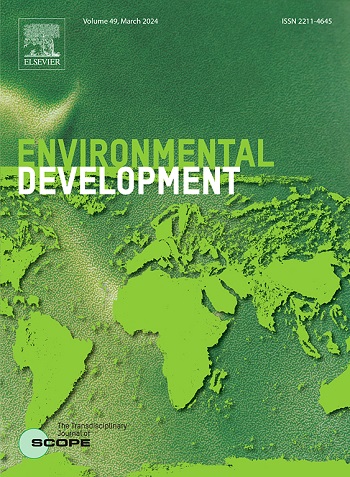迈向森林4.0:无人机和智能手机应用于巴西亚马逊地区的社区森林管理
IF 5.3
2区 环境科学与生态学
Q2 ENVIRONMENTAL SCIENCES
引用次数: 0
摘要
基于颠覆性和创新技术的创造性解决方案已被确定为亚马逊地区生物经济发展的重要工具。亚马逊社区作为森林的守护者——尤其是年轻一代——需要得到支持,以保护和加强他们的文化、生活方式以及与森林的关系。第四次工业革命带来的技术在促进农业采掘生产过程和减少非法砍伐森林方面具有巨大潜力。本研究旨在介绍无人机和智能手机在巴西亚马逊地区Purus国家森林c本文章由计算机程序翻译,如有差异,请以英文原文为准。
Towards Forest 4.0: UAVs and smartphones applied to community-based forest management in the Brazilian Amazon
Creative solutions based on disruptive and innovative technologies have been identified as essential tools for the development of the bioeconomy in the Amazon. Amazonian communities, as guardians of the forest—particularly the younger generations—need support to preserve and enhance their cultures, way of life, and relationship with the forest. Technologies from the Fourth Industrial Revolution hold significant potential to contribute to agro-extractive production processes and reduce illegal deforestation. This study aims to present a case study on the application of unmanned aerial vehicles (UAVs) and smartphones in the context of Community-Based Forest Management in Céu do Mapiá Village, located in the Purus National Forest, Amazon, Brazil. The models generated by UAVs supported decision-making related to micro-zoning of forest exploitation and enabled the mapping and temporal monitoring of canopy gap created by tree harvesting. Smartphones enhanced forest navigation and integrated data collection and processing in the chain of custody, from tree georeferencing to the recording of relevant information. The project tends to advance towards the Forest 4.0 concept by increasingly incorporating advanced technologies into forest management practices, offering a promising approach to improving the efficiency, accuracy, and traceability of forestry operations.
求助全文
通过发布文献求助,成功后即可免费获取论文全文。
去求助
来源期刊

Environmental Development
Social Sciences-Geography, Planning and Development
CiteScore
8.40
自引率
1.90%
发文量
62
审稿时长
74 days
期刊介绍:
Environmental Development provides a future oriented, pro-active, authoritative source of information and learning for researchers, postgraduate students, policymakers, and managers, and bridges the gap between fundamental research and the application in management and policy practices. It stimulates the exchange and coupling of traditional scientific knowledge on the environment, with the experiential knowledge among decision makers and other stakeholders and also connects natural sciences and social and behavioral sciences. Environmental Development includes and promotes scientific work from the non-western world, and also strengthens the collaboration between the developed and developing world. Further it links environmental research to broader issues of economic and social-cultural developments, and is intended to shorten the delays between research and publication, while ensuring thorough peer review. Environmental Development also creates a forum for transnational communication, discussion and global action.
Environmental Development is open to a broad range of disciplines and authors. The journal welcomes, in particular, contributions from a younger generation of researchers, and papers expanding the frontiers of environmental sciences, pointing at new directions and innovative answers.
All submissions to Environmental Development are reviewed using the general criteria of quality, originality, precision, importance of topic and insights, clarity of exposition, which are in keeping with the journal''s aims and scope.
 求助内容:
求助内容: 应助结果提醒方式:
应助结果提醒方式:


